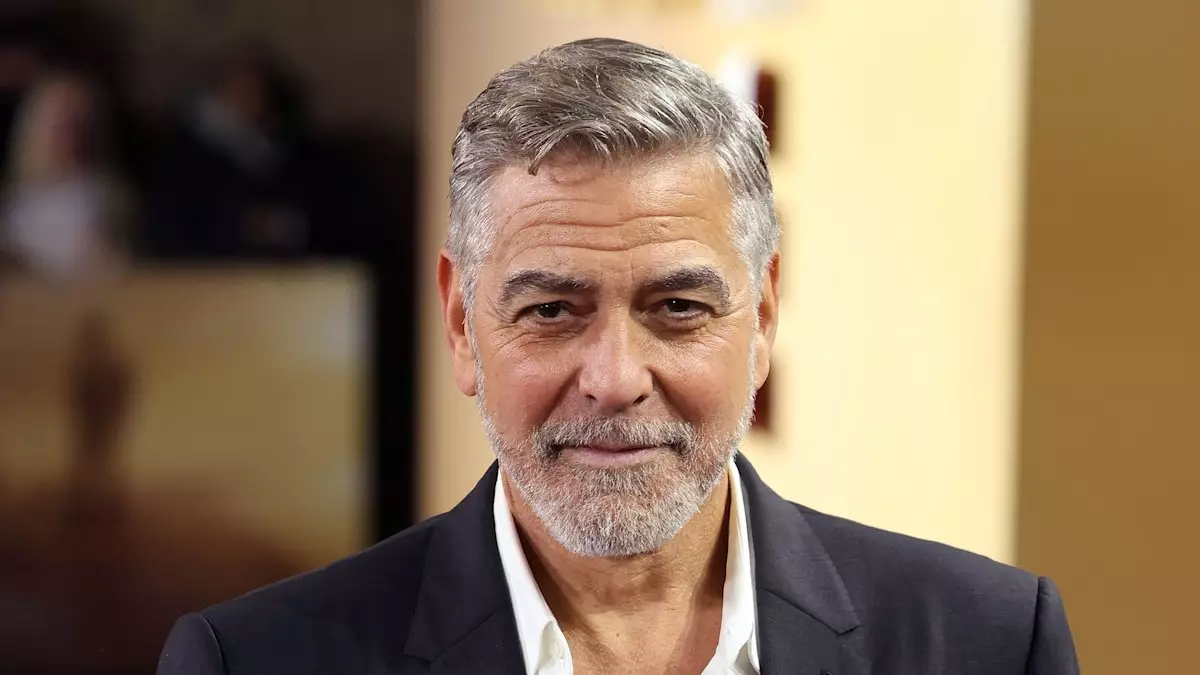George Clooney, an actor whose name resonates with charisma and talent, has officially traded the silver screen for the Broadway stage in his much-anticipated debut in the play *Good Night, And Good Luck*. This momentous occasion marked not only a significant milestone in Clooney’s storied career but also a remarkable transformation of his personal appearance. Known for his signature salt-and-pepper locks, Clooney’s stunning new dark brown hairstyle for his portrayal of the legendary Edward R. Murrow grabbed headlines and turned heads alike. At 63 years old, the Hollywood star took on one of journalism’s most iconic figures, leading to a wave of excitement—and a hint of surprise—from fans and fellow thespians.
As Clooney recast himself in this pivotal role, the focus extended beyond mere aesthetics; it signified a profound commitment to embodying the spirit of Murrow during an era defined by fear and suspicion. This transformation was not just skin-deep; the actor’s energetic embrace of the character underscored an evolution both personally and professionally, showcasing his ability to adapt and thrive across genres.
The Humor Behind the Transformation
Taking a candid approach, Clooney discussed his dramatic change in appearance with a refreshing sense of humor. “My wife is going to hate it,” he quipped in an interview, illuminating the humorous dichotomy between public perception and private life. His acknowledgment that “nothing makes you look older than when an older guy dyes his hair” struck a relatable chord, revealing that even Hollywood icons are not exempt from the trials and tribulations of aging. The ease with which Clooney jokes about his new look expresses a counter-narrative to the often unrealistic standards of beauty in Hollywood, and it resonates deeply with audiences who are well-acquainted with their own aging journeys.
While George’s wife, Amal, was unable to attend opening night due to parenting responsibilities for the couple’s young twins, his heartwarming remarks about her only amplified his status as a devoted family man. His genuine pride and admiration for Amal were palpable as he discussed their life together, highlighting the importance of balancing professional ambitions and family life—a foundation upon which Clooney appears to thrive.
Life in the City: A New Normal
Recently, the Clooney family made the significant decision to move to Manhattan to facilitate George’s immersion into Broadway life. This shift underscores the adaptability and determination of an actor who has conquered multiple realms of the entertainment industry. Clooney described this new routine—working at night while enjoying time with his children during the day—as an ideal schedule, showcasing his thoughtful approach to fatherhood amidst a demanding career. This reflection on his lifestyle adds depth to the narrative around his Broadway debut, indicating that Clooney’s transition involves more than just his performance—it reflects a conscious effort to harmonize his personal and professional worlds.
The Weight of History
*Good Night, And Good Luck* is not merely an adaptation of the acclaimed film but a poignant exploration of media integrity during one of America’s most tumultuous political eras. Clooney crafted this story not just as a script, but as a necessary reminder of the role journalism plays in preserving truth. Stepping into the shoes of Murrow, Clooney brings a remarkable depth to a character who fought fiercely against misinformation during the height of McCarthyism. This narrative is especially relevant today, as society grapples with similar issues regarding the dissemination of information and the fight against disinformation.
As the curtain rose at the historic Winter Garden Theatre, the star-studded audience was a testament to Clooney’s draw. Celebrities such as Jennifer Lopez, Uma Thurman, and Gayle King heralded the actor’s return to the limelight, solidifying his status as both a beloved figure and an artistic force. Their presence underscored not just Hollywood’s support but a collective acknowledgment of the significance of this moment—both for Clooney and for the themes explored in the play.
In a world obsessed with youth and beauty, Clooney’s transformation can serve as a powerful reminder of the narratives that are often overlooked: the complexities of age, family dynamics, and the timeless relevance of integrity in life and art.

